Hey there. So, I guess there’s a new Fantastic Four movie heading our way this year. Color me intrigued. In the meantime, it spurred a memory that I’d actually written the FF in a limited series that, in retrospect, turned out pretty cool. C’mon, Sherman… let’s jump into the Wayback Machine and take a look…
FF: FIRST FAMILY was not a cold pitch brought to Marvel by me. I was asked by editor Tom Brevoort (currently working with me on WEAPON X-MEN) if I was interested in tackling a Fantastic Four series in a similar vein to the AVENGERS: EARTH’S MIGHTIEST HEROES series I was also writing at that time. In other words, a historical story taking place in what we often call the “Year One” period of a series or character (thanks to Frank Miller, that term had become shorthand for the earliest days of a superhero’s career).
Now, I guess you could say I’m sort of a closeted Fantastic Four fan. When the book’s been great, I was all in. Lee/Kirby… Thomas/Wein/Pérez… John Byrne… Walt Simonson… all of them obviously as good as it gets. I’ve got great affection for the characters and the concept. After all, any comicbook that has the balls to declare itself “The world’s greatest comic magazine” has automatically got my respect.
I had a bit of a think about it… and what follows is what I came up with as a first round of thoughts about the project that I quickly sent over to Tom…
**********************************************************************
FF: FIRST FAMILY
pitch by Joe Casey – 06/07/04
THE INTENT
So, as I understand it, this series is meant to put the microscope on a specific period of the early FF’s history: the post-rocket crash, pre-costumed period that occurred over the original FF issues #1-3. For the first time in a long time, we’ll be seeing the characters during a singular moment in their lives. So FF: FIRST FAMILY will ideally serve as a previously untold -- but important -- chapter in the lives of the inaugural heroes of the Marvel Universe, a character study that will illuminate nuances of the Fantastic Four while fitting seamlessly with their later, widely accepted characterizations. A few new elements will be introduced in this series, and new insights will hopefully be gained into certain events that shaped who and what the Fantastic Four -- the four individual members -- eventually became.
WHO THEY WERE THEN
So if FIRST FAMILY is meant to focus on the characters more than their adventures, then we’re obviously going to be spending time with a Fantastic Four that might, at first, seem very unfamiliar. Before all of the accepted iconography, the involved subplots and the rooms full of Kirbytech, the FF operated primarily like underground agents -- forged out of tragedy -- trying to make the world a better place. There were no bright, happy blue uniforms. There was no Baxter Building… they hung out in secret apartment hideouts! These were people who tried to get away with an unauthorized space flight! Their appearances scared the general populace (if they dared show their faces in public at all).
One thing I’d like this series to portray is the inherent… creepiness and uneasiness that pervades those early Lee/Kirby issues, before the FF completely occupied the superhero idioms they later exemplified. Quite a few terms come to mind when describing the tone I’d want to achieve for this series: Personal. Melancholy. Romantic. Emotionally-charged. Mind-bending. Heartbreaking. Spooky. Imaginative. Everything that was present in those first three original issues, but obviously updated for a modern readership. I’d definitely want to inject a bit of “weird science”-vibe to this series. If this type of project is going to succeed creatively, it has to commit to a tone and stick with it.
A FEW NEW ELEMENTS
If Lee and Kirby’s FANTASTIC FOUR represented anything… it represented “the new”. It was the book you read to connect to radical, new concepts month-in, month-out, whether it involved imaginative new characters or groundbreaking characterizations. It’s something the FF did better than any other Marvel series. FIRST FAMILY will tip its hat to that spirit of the new by introducing a few pivotal, new characters of its own to the early events in the career of the FF. The first is a supporting character, the then-Chairman of the Joint Chiefs of Staff, GENERAL WALTER MONTGOMERY (needing a high-ranking governmental figure, but not wanted to tie this series down to a specific Presidential administration, I figured the Joint Chief Chairman was the best bet).
And, of course, a few new antagonists. Because of the limited focus of this series, I came up with two characters who -- just like the FF -- are victims (whether on purpose or by accident) of “cosmic radiation sickness”. The first is an American named RAY BARRETT (whom I’ve given the clever nickname, “Cosmic Ray”). Cosmic Ray has been transformed into a being of pure light (which is hidden early on by an outer shell that eventually crumbles and breaks away, revealing the transformed being underneath). Ray is a tragic figure that will serve as a powerful lesson to Reed Richards in particular on how a cosmic radiation victim can be treated by the authorities (short version: not good).
The other new character is the main villain of the piece, another individual affected by cosmic radiation named FRANZ HAHL (a German scientist). Unlike Ray and the FF, where the effects of cosmic radiation are physical in nature, Franz’s brain was affected… specific areas of his brain mutated and changed to the point where now Franz is a high-level telepath. But not in the benevolent, Professor X way… Franz is a cold and sadistic individual and the cosmic radiation has effectively poisoned his sense of good and evil. A cracked mirror image of Reed, Franz can stretch and twist his mind, his thoughts and the thoughts of others.
DOING THE MATH
Okay, so I know I brought up the notion of a four-issue series rather than the suggested six-issue length. First of all, it just seems natural in all the right ways for this thing to be four issues, mainly for the fact we’ve got FOUR in the title. From a marketing perspective, it makes even more sense. It’s a bonus that, for this type of story, I think having four “chapters” simply flows better than six. However, four issues would probably necessitate a higher page count. With a trade paperback page count in mind, here’s the math if we do four issues at higher page counts:
4 issues @ 32 pgs. each = 128 pgs. total
4 issues @ 33 pgs. each = 132 pgs. total
Additionally, I think that anything that can somehow set this series apart, format-wise, is worth considering. I enjoy the idea of tailoring formats to best match (and serve) the material. I think higher page counts per book -- while not the most original “experiment” we could do, format-wise -- would give the reader that warm, fuzzy feeling that they’re actually getting their money’s worth; a nice, big chunk of story every issue.
THE STORY
So, in the spirit of proceeding with four chapters, I’ll give you a rough breakdown of those four issues as I see them. Some sections may seem a bit scattershot, but bear with me, as I’m writing on the fly here to a certain degree…
CHAPTER ONE
As it often happens, the first page splash image came to me fairly early on: Out in the woods of upstate New York, it’s the moment AFTER the famous “hand oath” between the FF after the crash. And in that moment, they are suddenly besieged by several high-powered helicopter spotlights. Military helicopters.
The majority of the issue takes place in the military “quarantine and containment center” (basically a top secret lockdown lab for radiation experiments gone wrong… very much in the Area 51 mold). All four of them are being held separately in rooms that could only be described as… cells (each one tailored to cater to their specific abilities). Individual interrogations with everyone except Reed reveal flashback snippets of the rocket flight (just to bring readers up to speed on the details). However, Reed is the most non-communicative of them all, completely self-absorbed in his newfound abilities (not just physical… the way his brain functions also seem to have been altered). The only other person he seems to have any rapport with is, oddly enough, Franz Hahl (a fellow scientist, as cold and calculating a personality as Reed sometimes is), who communicates with him telepathically.
We see the four heroes in their most desperate states of mind, trying to come to grips with their transformations without the benefit of communication with each other (although Sue visits the other three individually, her invisibility allowing her to move freely about the facility). Lots of individual character moments. For instance, Ben Grimm’s girlfriend is allowed to visit, but when she sees what Ben’s become, she’s horrified and leaves him forever (effectively breaking his heart). At this point, there’s no way to know when the four may be allowed to leave. Perhaps never. And Reed’s inability (or refusal?) to substantially talk to anyone, including General Montgomery (who was a friend during Reed’s military development of the “pocket rocket” and who genuinely wants to help him now), isn’t helping their cause. But the question seems to be… is Reed too far gone? Has his transformation affected him too severely? Or is the guilt over what he’s done to his friends just too much for him to bear?
The incident that snaps Reed out of his funk is a particularly spectacular one, the action set piece of the issue. For lack of a better term, a prison break occurs, and COSMIC RAY (in the final stages of his transformation into a being of pure cosmic energy) has gone crazy, blasting out of his cell and generally wreaking havoc. The final confrontation occurs in a special chamber where a fallen space rock, a crystalline meteorite has been kept, seemingly for decades. As Ray breaks into this chamber, the security staff closes in. When Ben and Johnny eventually aid in Ray’s capture, Reed sees first-hand how “rogue” cosmic radiation victims are treated, as Ray is given a severe, brutal beatdown by the security guards (over Ben and Johnny’s protests). Witnessing this, Reed has an epiphany: He’s been going about this all wrong! To gain acceptance (and, hopefully, freedom) for himself and his friends, he needs to be extra sociable. Extra accommodating to his “hosts”. Almost immediately, Reed becomes the most congenial, friendly, cooperative “guest” at the facility.
Oh, did I forget to mention that -- due to the confusion and chaos of Ray’s attempted escape and subsequent rampage -- one specific “inmate” of the quarantine facility is still unaccounted for…? The most feared and potentially dangerous individual being kept prisoner at the facility. Yup, you guessed it. Franz.
It’s Reed’s renewed friendship with General Montgomery that allows himself, Ben, Sue and Johnny to finally leave the facility. In General Montgomery’s mind, he’s about to have unlimited access to four new, superpowered, covert government agents. Reed actually has other ideas. The first thing the four do… is basically go into hiding. Reed advises everyone to keep an extremely low profile. But the question remains… does the oath they made just after the crash still hold true for them? Are they still intent on becoming “the Fantastic Four”?
This question is answered at the end of this issue… with the famous scene (from the original issue #1) of Reed at the window, firing the famous signal flare out the window and into the sky. Yes, they are the Fantastic Four. But, as the majority of this series will demonstrate, they will be behaving very much unlike the FF we’ve come to know.
****************************************************************************************
And there you have it. Funny how I pushed so hard on format and page length (literally “writing for the trade”). But it made sense to me then and it still does. Fantastic Four… four issues. Seemed like a no brainer. In the end, we stuck with it as a six issue series. Other than that, the story we told is pretty much what I originally conceived. I don’t recall a lot of significant changes from pitch document to printed page.
I’m proud to say that artist Chris Weston was someone I brought to the party. I was a big fan of Chris’ work. Still am, in fact. We’d recently become friendly and were just starting to discuss collaborating on something when the notion of this series came up. I connected him with Brevoort and soon enough we were off and running. Turned out he was absolutely perfect for the gig. As you can see from the bits above, Chris had that perfect blend of photo-realism and stylization that really sold the specific story we were telling. His depiction of the Baxter Building is as good as it’s ever looked. And he really nailed, as I said, the inherent creepiness found in those early Kirby FF issues.
Ten years later, Fox put out their final Fantastic Four film, directed by Josh Trank. It was a darker, creepier take on the FF’s origin. I have no evidence that any of the filmmakers ever took a look at FF: FIRST FAMILY when they were developing their story, but I can see the similarities…
I honestly don’t know if the FF: FIRST FAMILY collected edition is still in print. Knowing Marvel, I suspect it’s not.
Speaking of which, I might as well bust out another preview for WEAPON X-MEN issue #2, hitting stores next week…
Joe Casey
USA

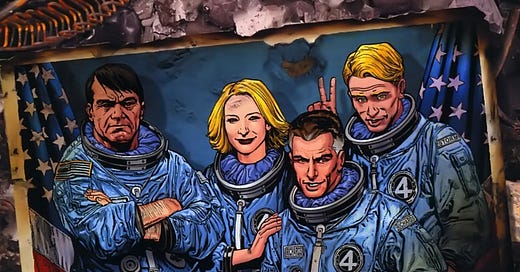



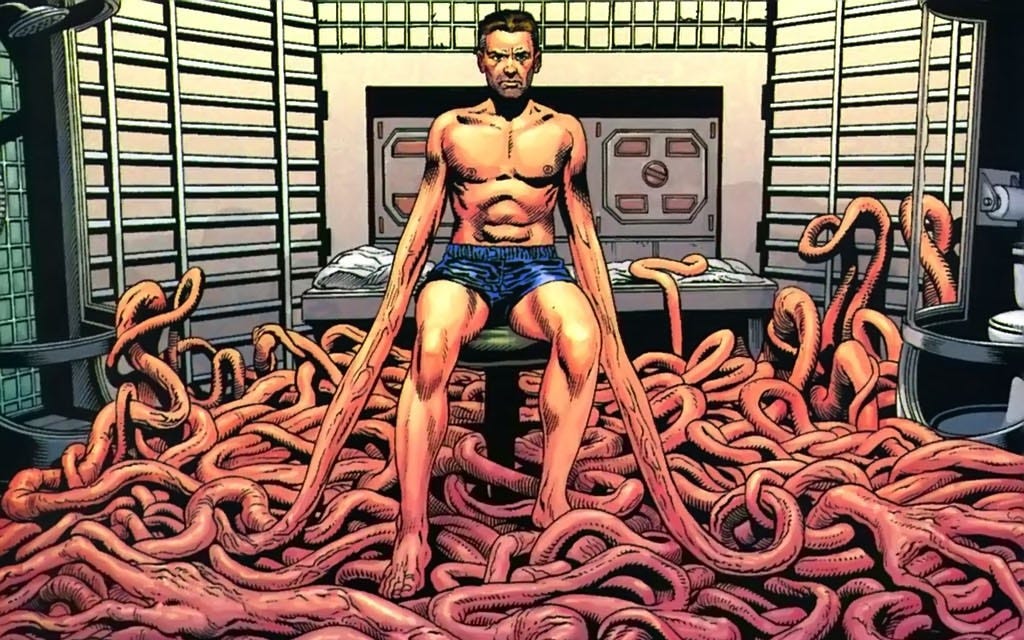
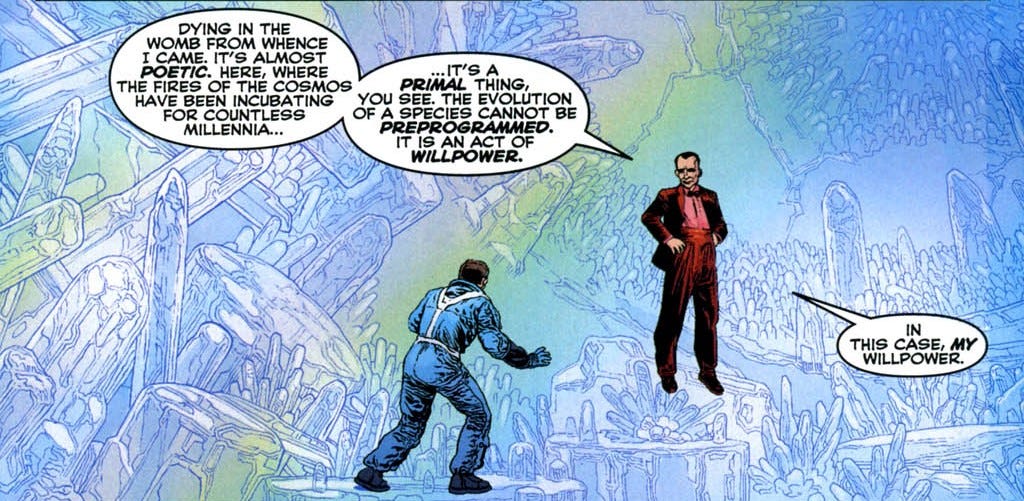
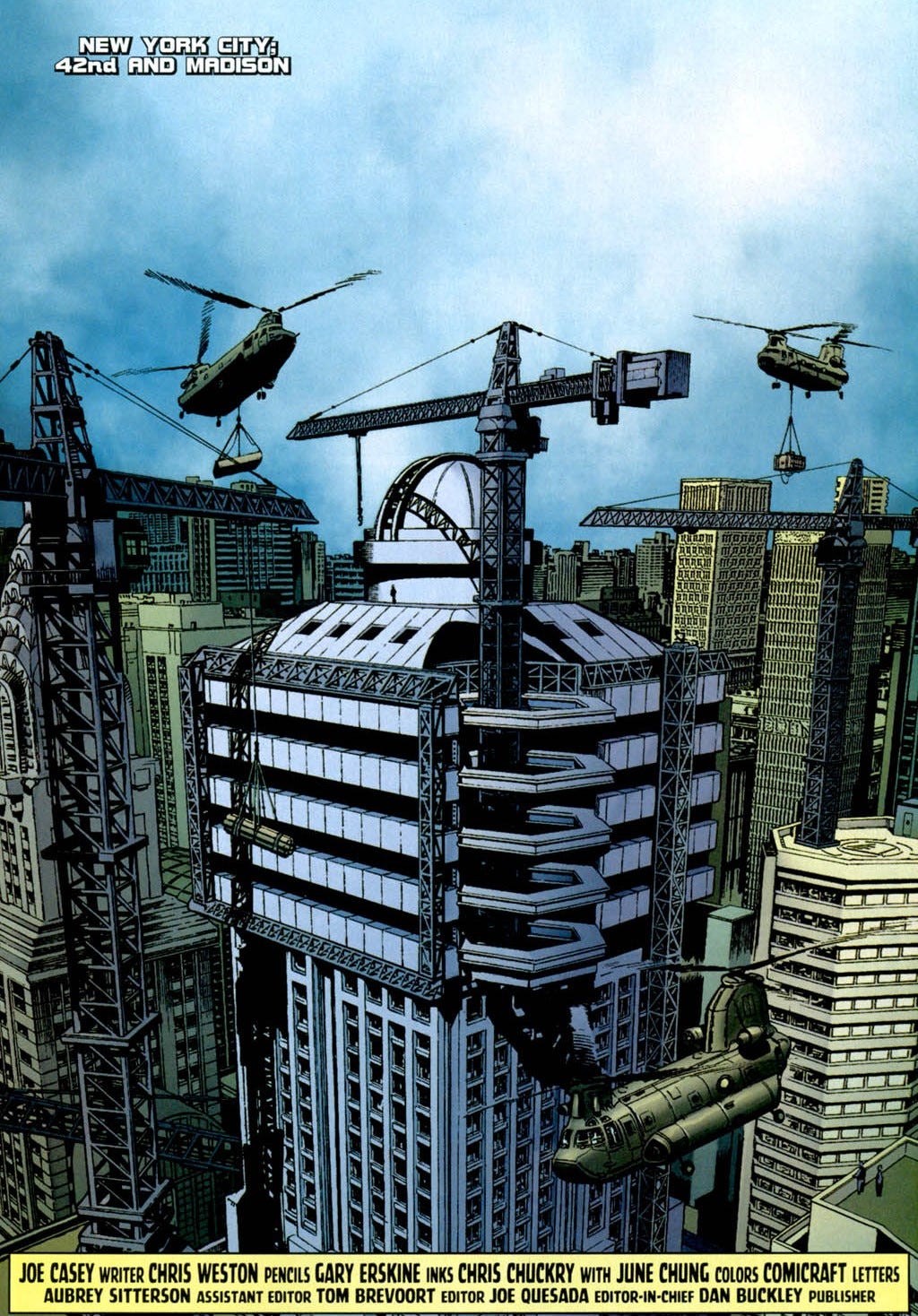

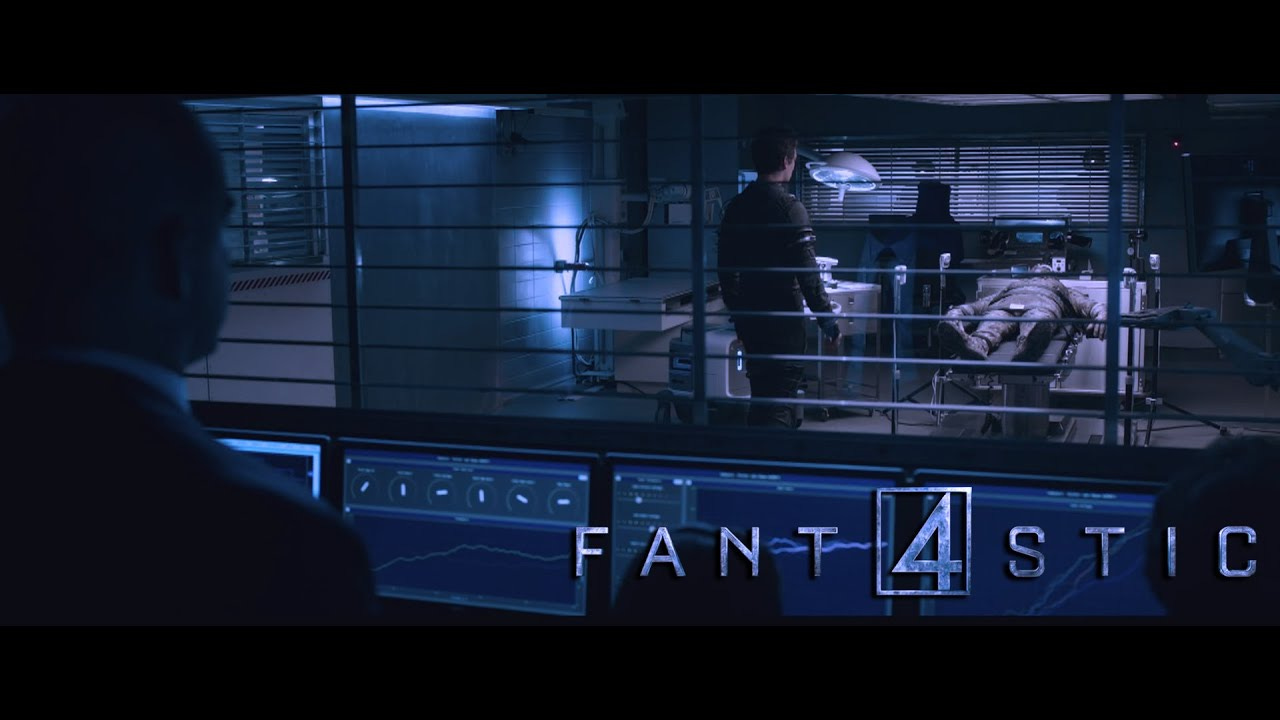
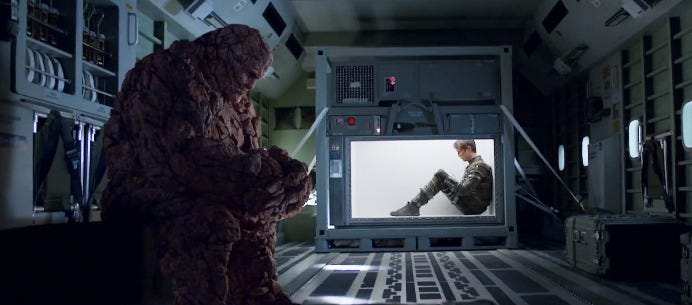
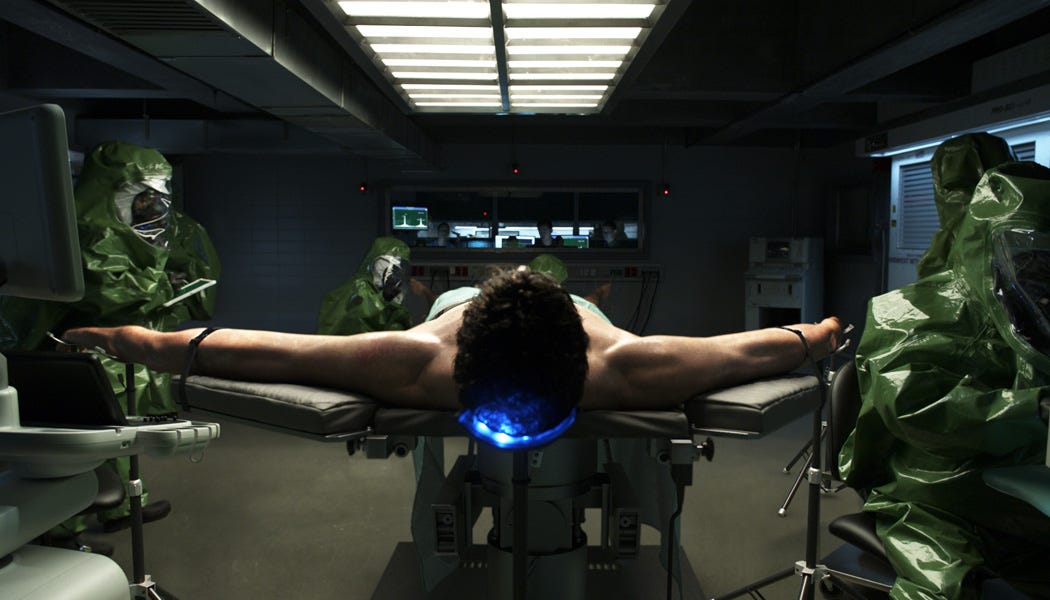
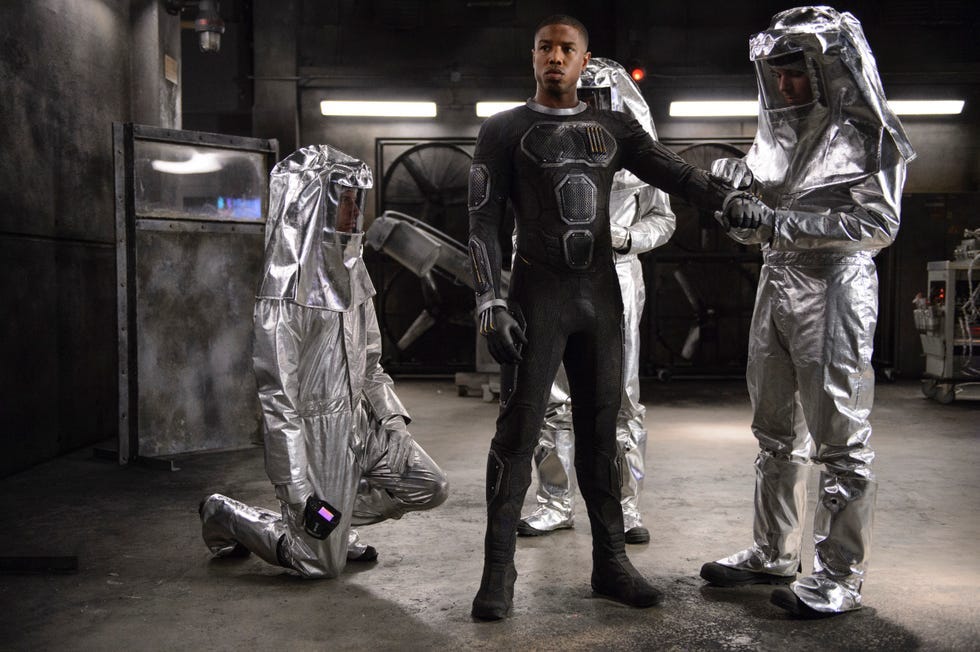
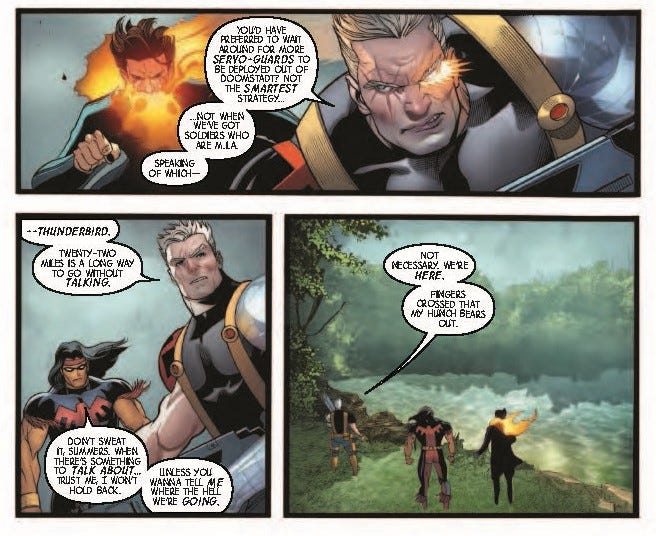
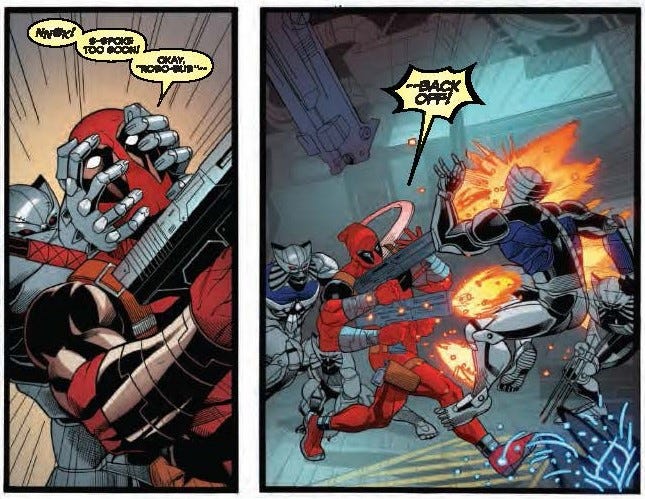
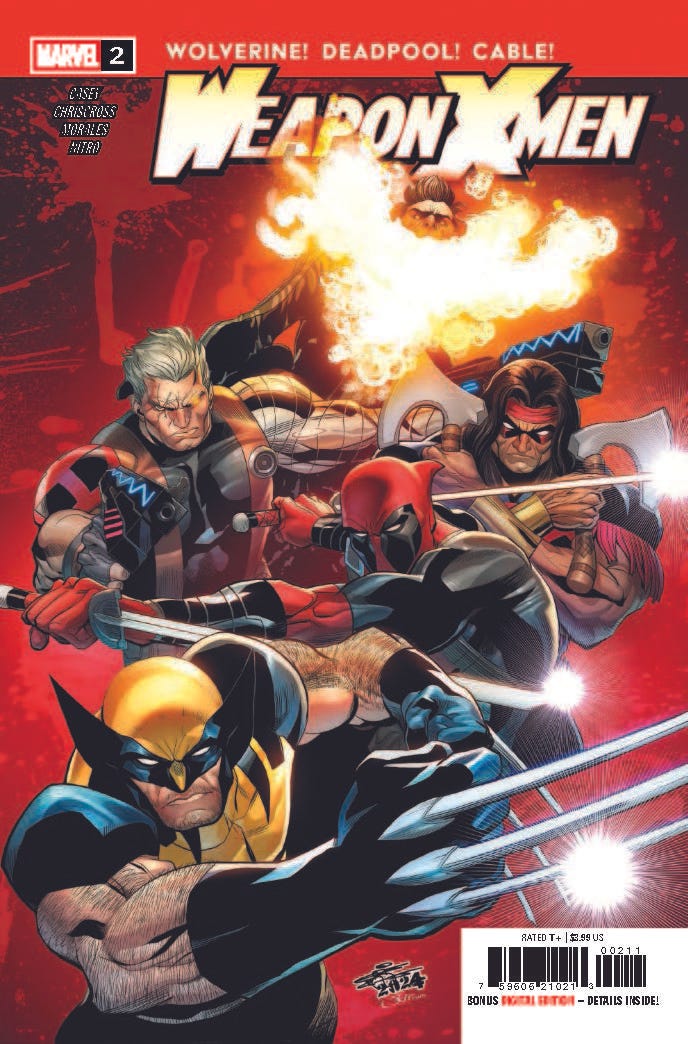
Never read it, but now I want to..😁
Loved this séries when it came out.